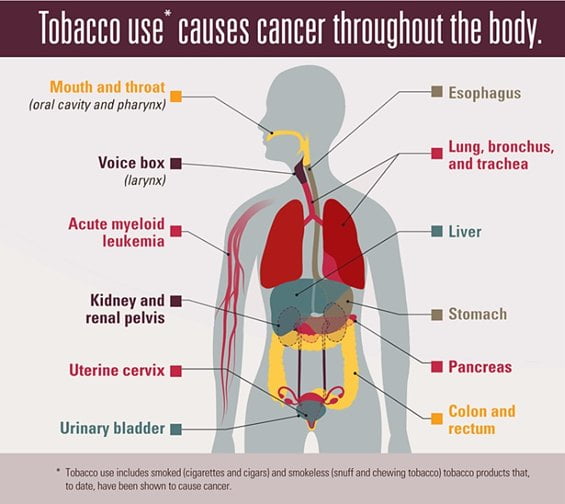Tobacco: Its Use and Abuse – A Reminder On World No Tobacco Day

Tobacco was first discovered by the native people of early America and South America and later introduced to Europe and the rest of the world. It was already in use when Columbus and the European colonisers arrived in America, who in return introduced tobacco to Europe and elsewhere. With the passage of time, tobacco became an irresistible attraction that assumed the proportion of an addiction, with its heady craze for more. As a consumptive material, it became an instrument of trade and economy that involved cultivated practices with indentured labourers and big plantations.
It had its inherent reasons for growth. As a member of the nightshade family, like tomatoes and eggplant, it is very fast-growing, can be harvested multiple times a year, involved simple procedures of simple cutting and its resumption of by itself. It is this ability that made it easy to self-generate and expand its cultivation. This had a say in its high yield and economic returns.
Types of Tobacco Plants

Uses of Tobacco:
It was originally used by the Native Americans in their religious ceremonies and also for medical purposes. Its earliest recorded use was as a remedy for dressing wounds, reducing pain, and even for tooth aches. Tobacco’s addictive properties due to its inherent chemical nicotine was the precursor for its later use as an intoxicant in various forms; and after that it was a ‘free for all’ commodity that ruled our minds into a submissive relaxation from stress and well-being.
Later scientists were to discover its range of properties and have used it for various modern uses that include:
- As an antiseptic
- As an appetite suppressant
- As an anti-obesity drug
- As a laxative
- As an intestinal de-wormer
- Genetically modified to produce medicines for several auto-immune and inflammatory diseases, including diabetes
Different forms of Tobacco
- Cigarettes, including light, hand-rolled, natural, or herbal cigarettes and low-tar menthol and clove cigarettes
- Cigars, little cigars, cigarillos
- Bidis (flavored cigarettes)
- Dissolvable products
- Electronic cigarettes (also referred to as: Vape Pen, e-Hookah, Hookah Pen)
- Traditional smokeless tobacco (SLT) products
- Waterpipes (also referred to as: Hookah, Shisha, Narghile, Argileh)

Harmful Chemicals in Tobacco Products
- Nicotine (the addictive drug that produces the effect people are looking for and one of the harshest chemicals in tobacco smoke)
- Hydrogen cyanide
- Formaldehyde
- Lead
- Arsenic
- Ammonia
- Radioactive elements, such as uranium
- Benzene
Immediate/short term effects
- Initial stimulation, then reduction in activity of brain and nervous system
- Increased alertness and concentration
- Feelings of mild euphoria
- Feelings of relaxation
- Increased blood pressure and heart rate
- Decreased blood flow to fingers and toes
- Decreased skin temperature
- Bad breath.
- Fatigue and a decrease in energy.
- Reduction in the senses of taste and smell.
- Coughing.
- Shortness of breath.
Patterns and Prevalence of Tobacco Use in India
(extract from the Indian Journal of Clinical Medicine, Research Article by Priya Mohan, Harry A Lando, Sigamani Panneer, March 7, 2018)
India is the second largest consumer of tobacco where 28.6% of the population consume tobacco in any form, with 10.7% smoke, and 21.4% use smokeless tobacco (SLT) users. Khaini (a form of SLT) and beedis which was a response to the Swadeshi Movement, are the dominant forms of tobacco consumed in India, at 11% and 8%, respectively. The tobacco consumption annual growth rate is 2% to 3%.
Smoked form was consumed by 14% of the population. On an average, Indians smoked about 6.2 cigarettes per day. Beedis accounted for the largest proportion of smoked tobacco consumed in India, especially among the lower socio-economic group, they consume beedis 8 to 10 times more than cigarette smoking. Smokeless tobacco use is documented in 120 countries. India has the largest number of SLT users in the world.
Doctors are exemplars of tobacco cessation and play a crucial role is the success of cessation services and a pivotal role in tobacco control, having opportunity for helping tobacco users to quit and also prevent initiation. However, studies have shown about 50% in Indian male doctors smoke. Similarly, studies on tobacco consumption in health professional students (medical, dental, nursing, and pharmacy) have shown the consumption rate is high among them especially male medical students; this is detrimental not only to the individual but also to the society as it dilutes their ability to deliver effective anti-tobacco counselling in their future clinical practice.
Secondhand smoke (SHS) exposure is a significant problem in India, at both indoor and outdoor. A study has shown 70% to 80% of the male smokers regularly smoked in home; 3 in every 10 adults working indoor are exposed to SHS. About 23% of adults have reported SHS exposure at public places. In home, SHS exposure remains high especially among children.
Some positive effects of Tobacco/Smoking
Kills pests: Tobacco is a great pest poison for the garden, especially for centipedes, caterpillars and snails that tend to feed on leaves.
Relieves allergies: A small mass of tobacco leaves when put on skin inflammations can help soothe itching and mild pain.
Makes an all-natural insect repellent: Spraying a pre-boiled strained package of chewing tobacco, acts as a good pest control.
Give first aid to minor cuts: In case there is no topical iodine in sight, you can use ground up tobacco to keep fresh wounds from infection.
Clear nasal passages: As a home remedy for colds, using boiled tobacco with tulsi and inhaling the steam or smoke clears up the lungs.
Long-term Effects on Human Body
Smoking causes cancer, heart disease, stroke, lung diseases, diabetes, and chronic obstructive pulmonary disease (COPD), which includes emphysema and chronic bronchitis. While it is true that smoking tobacco products (including cigarettes and cigars) causes almost nine of every 10 cases of lung cancer, but smoking can cause cancer almost anywhere in your body, as the diagram below shows:

Quitting smoking: 10 ways to resist tobacco cravings
For most tobacco users, tobacco cravings or urges to smoke can be very wary and powerful. But one can overcome these hurdles. It is a battle between the irresistible desire and the inherent determination to quit smoking or tobacco chewing. As suggested and supported by the pioneering life science research centre, Mayo Clinic, USA, the following could form a guideline to quit smoking.
1. Try nicotine replacement therapy
Ask your doctor about nicotine replacement therapy. The options include:
- Prescription nicotine in a nasal spray or inhaler
- Over-the-counter nicotine patches, gum and lozenges
- Prescription non-nicotine stop-smoking medications
- Electronic cigarettes as an alternative to smoking traditional cigarettes.
2. Avoid triggers that urge to use tobacco
Identify your trigger situations and have a plan in place to avoid them entirely or get through them without using tobacco. Avoid situations for a smoking relapse.
3. Delay the craving
When the craving for tobacco arrives, tell yourself that you must first wait for some time and then do something to distract yourself for that period of time..
4. Chew on something
Chew on something crunchy and satisfying like chocolates or raw vegetables to fight a tobacco craving.
5. Don’t settle for ‘just one’
Do not be tempted to have just one cigarette to satisfy a tobacco craving. One cigarette or many, has the same effect to end up using tobacco again.
6. Get physical
Physical activity can help distract you from tobacco cravings and reduce their intensity, even be they short bursts of physical activity. Keep yourself engaged at home.
7. Practice relaxation techniques
Resisting tobacco craving can itself be stressful. De-stress by practicing relaxation techniques, such as deep-breathing exercises, yoga or listening to soothing music.
8. Call for reinforcements
Take the help of your friends or social groups to share your time and experiences and seek encouragement.
9. Go online for support
Join an online stop-smoking programme, including de-addiction centers. There are blog and posts, often written by people who overcame tobacco use, that encourage tobacco quitting.
10. Constantly remind yourself of the benefits
Write down, share or repeat to yourself the reasons you want to stop using tobacco and resist tobacco cravings. These might include:
- Feeling better
- Getting healthier
- Sparing your loved ones from secondhand smoke
- Saving money
It is better to try and fail rather than never try at all. And each time you resist a tobacco craving, you’re one step closer to being totally tobacco-free. Tobacco is seen as an avoidable ‘devil’ these days and the society must come together to move towards a tobacco-free world; as the gains of not having it far outweighs the benefits of having it amongst us.

Comments are closed.